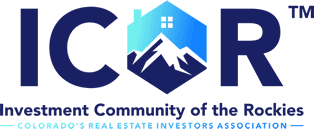
The Evolution of Private Debt – From Niche Strategy to Mainstream Asset Class
My Journey into Hard Money Lending
The year was 2003. I was a 22-year-old kid trying to learn about real estate investing. I already owned a home, but it was time to buy my first rental. I learned in a free real estate seminar to read the classified section of the local newspaper and call all the landlords, for sale by owners, and hard money lenders. Hard money lender is a term used for private debt or private money lending in real estate. The idea was to try to find deals to buy and build relationships with the lenders to fund those deals. The expert in front of the room told me to hit the phones so I called every ad in the paper.
The classified ads for hard money lenders were easy to navigate and all the ads basically said the same thing. “Hard Money Lender” and their phone number. Back then hard money lenders were all old wealthy guys lending out their own money, at least that is how it was in Denver. I was young and mostly broke with very little credit history and no income that I could document. Luckily for me, these lenders did not care as long as the deal was good. I would borrow money from them regularly to fund my fix and flips. They were easy to work with and provided me with the much-needed capital to complete my projects and get my career started. I really appreciated them and the service they provided, so I eventually became one. The problem was that I did not have millions of dollars to lend like they did, so when I became a lender, I had to take a different approach. I learned from a mentor in 2006 how to raise money from individual investors and invest their money in private debt by lending it to other real estate investors like me. I brought the private money lender and a borrower together and managed the process for a fee. I then learned, from another seminar, how to pool money into a fund which accelerated my business growth. At the time, I thought I had invented private mortgage funds and a loan servicing system until I went to my first industry conference put on by the American Association of Private Lenders. It was there in Vegas that I humbly learned that people were doing this business all over the country and they were far bigger, more organized, and more profitable than I was. Today, hard money is a huge industry with many public companies and funds like Blackstone, Blackrock, and Brookfield all getting in the game.
The Historical Roots of Private Lending
Private debt, a broader term that includes hard money, can be traced back long before my little start calling on those classified ads in the Denver Post. In fact, it can be traced back to ancient times in Mesopotamia, Egypt, and Greece where people would make loans to each other and secure the loans with physical assets. Animals and crops were great examples of the collateral used. It grew into a more legitimate industry and became formalized in the United States early in the 20th century during the great depression when banks stopped lending. It grew further after the savings and loan crisis in the 80s and experienced significant growth after the global financial crises.
The 2008 Financial Crisis: A Catalyst for Change
In 2007, housing values had already started to drop. Interest rates were rising, and homeowners were starting to default. The years of easy money had come to an end. That year two large Bear Sterns hedge funds failed, and the financial crisis was underway. In 2008, Lehman Brothers filed for bankruptcy protection, which was the largest bankruptcy in United States history. This shocked the world and threw fire onto the already failing housing market. In all, over 500 banks failed according to the Federal Reserve Bank of Cleveland and the two largest residential note investors, Fannie Mae and Freddie Mac, were taken over by the government. One of the largest outcomes, other than the complete devastation to the world economy, was the Dodd Frank Wall Street Reform and Consumer Protection Act. This completely changed the lending landscape in this country. It made lending money very difficult for banks, so not only were they scared to lend, in many cases, they were not allowed to. The event helped accelerate private debt in a big way as private capital filled a void left by the banks.
The Remarkable Growth of Modern Private Debt
According to Preqin, a leading provider of alternative asset data, as of early 2025 the private debt industry has grown to almost $1.8 trillion—10 times the size of the industry prior to the financial crisis. Many experts believe we are still in the early innings of private debt growth and could see the industry explode in the coming years. Michael Zawadzki, the Global CIO for credit and insurance at Blackstone, believes the industry will grow to $25 trillion. The chart below shows the rapid acceleration of the private debt market through 2024.
Regulatory Landscape and Investment Opportunities
Although there is some hope that real estate in general will benefit from what is expected to be softening regulatory policies with the new administration, banks likely won’t have much benefit. Basel IV went into effect in 2023 and is currently being implemented by banks across the world. It is expected that it will take a total of five years to fully implement so we are right in the middle of its future impact. Basel IV has additional reforms that came out of the global financial crisis and is meant to standardize certain guidelines for banks from multiple countries. Each iteration of the Basel reforms has been more restrictive, putting pressure on banks to balance their lending portfolios and increase liquidity requirements. These regulations continue to force banks to turn down loans they ordinarily would want to do. Combine this with sticky inflation and the market’s expectation of a higher for longer rate environment, and borrowers are likely to continue to accept loans from private lenders at higher interest rates. These factors make it easy to see why professional investors expect the private debt market to continue its growth trajectory. These factors make private debt an attractive investment for institutional investors and retail investors alike. The asset class is able to combine high returns with stability, making it a great hedge against market volatility. For lenders securing their loan with real estate, they are securing their investment with a known inflation hedge. Not to mention the possibility of creating cash flow with monthly distributions and some liquidity options that are not possible with traditional real estate investments.
Why Private Debt Works for Individual Investors
When comparing private debt to other fixed income assets, you will find that the rates of return are not even close. The demand from investors to earn higher stable returns without investing in treasuries, bonds, or bank accounts has driven the industry in recent years. This is why Wall Street money is making its way in but that does not mean investors like you and I cannot participate. In fact, it is quite the opposite. Institutional investors are making loans on office towers, not single-family homes. The private debt industry needs smaller more nimble local investors to fund smaller loans. Institutional investors have a hard time funding fix and flips because they are simply too large to manage loans of that size. That is why local hard money lenders are so valuable to both real estate investors and passive investors looking for private debt opportunities. They are small enough to invest in markets they understand and can do the smaller loan sizes that real estate investors need. These smaller loans on properties that need repair are the exact loans fix and flippers cannot get from traditional banks. In many cases private or hard money lenders are the only option keeping loan demand and investor returns high.
There are many ways to profit from passive real estate investments. Private debt is just one option, but it can be a fantastic option to bring cash flow and stability to a portfolio.
